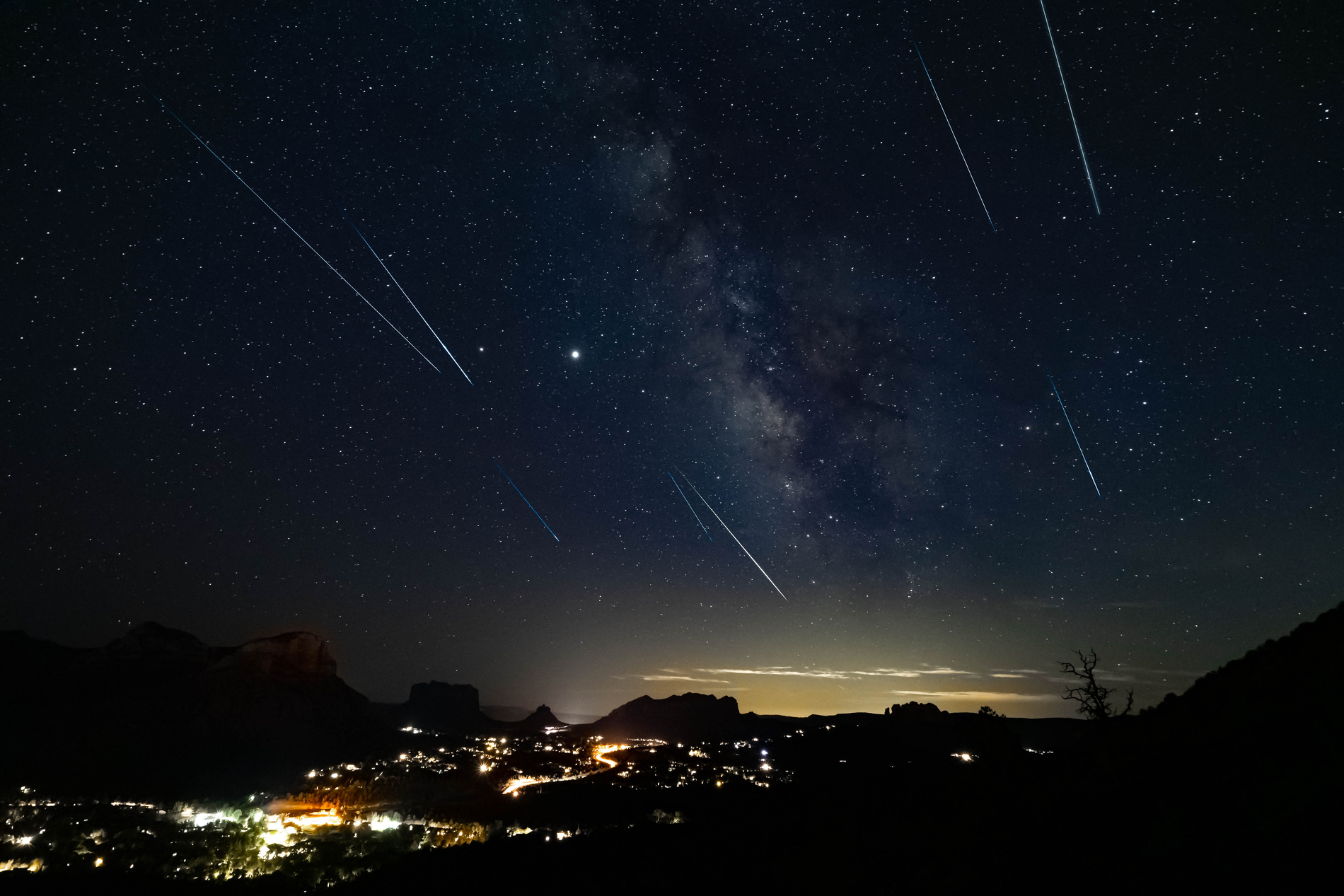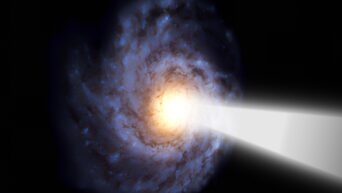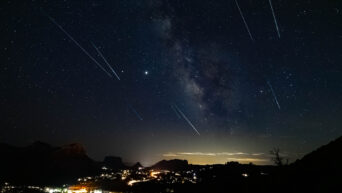
Credit: Shutterstock
One of the year’s most popular sky shows is back this August, and it’s still worth watching, even if the moon tries to steal the spotlight. The Perseid meteor shower is set to peak on the night of August 12 into the early morning of August 13, and if you’re lucky, you could spot dozens of shooting stars per hour.
Here’s how to make the most of it, even with a nearly full moon glowing in the sky.
So, what exactly are the Perseids?
The Perseids happen every year when Earth passes through the debris trail left behind by a comet called Swift-Tuttle. When tiny bits of that debris hit our atmosphere, they burn up and create those bright streaks across the sky. The name “Perseids” comes from the fact that the meteors appear to come from the direction of the constellation Perseus.
What’s special about 2025?
The meteor shower is active from mid-July to late August, but the best chance to see it is during its peak around August 12–13. Normally, stargazers can expect to see 50 to 100 meteors per hour under ideal dark-sky conditions. This year, though, the moon will be about 84% full, which means its brightness could wash out some of the fainter meteors.
Still, the Perseids are known for producing bright, bold meteors, and plenty of them are likely to outshine the moonlight.
How to get the best view
-
-
Get as far from city lights as possible
Light pollution is the real party crasher here. Find a quiet, dark spot like a park, field, or hiking area where the sky is wide open and not flooded with artificial light. -
Aim for the pre-dawn hours
While you can see meteors as early as 10 p.m., the best time to look is between 2 a.m. and 4 a.m., when the sky is darkest and Perseus is high in the sky.
-
-
Lie back and look up
No need for a telescope. Just bring a blanket or reclining chair, kick back, and let your eyes adjust. Give yourself at least 20 to 30 minutes without looking at your phone or other lights so your night vision can fully kick in. -
Try to block the moon
If the moon is bright and hanging in the sky, try to face in the opposite direction or block it with a tree, hill, or building. It doesn’t need to be perfect, just reducing the glare can help you spot more meteors.
Bonus tip: Pack snacks, bring layers, and maybe even invite a friend or two. Stargazing is way more fun with good company and something warm to sip on.
So yes, the moon’s a little bright this year, but that doesn’t mean you’ll miss the magic. The Perseids are still one of the best sky shows of the summer. Find your spot, set your alarm, and get ready to wish on a few falling stars.

































